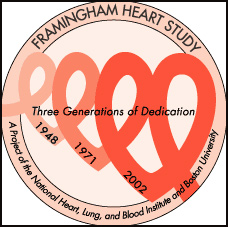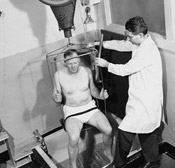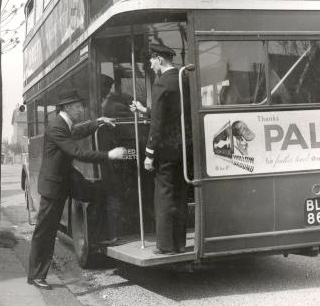Formal Studies Begin
Formal Cohort Studies
Formal epidemiological studies were initiated in the U.S. in the late 1940s and early 1950s to explore the causes and possible prevention of the emerging epidemic of heart attack and stroke. The first observations among population cohorts were oriented toward individual risk within the North American culture in Minnesota in 1947 and Framingham, MA in 1948. Another approach focused on the factors that determined CVD risk differences among entire populations, as in the Seven Countries Study. A third approach was experimental: clinical trials to modify the suspect causes and determine effectiveness and safety of prevention measures. Independently, formal studies developed at the London School of Hygiene and Tropical Medicine and soon spread to many places worldwide.
Next Slide Next Gallery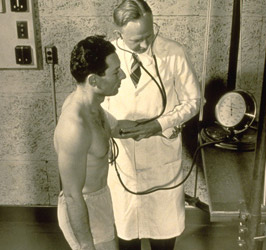
Laboratory of Physiological Hygiene, testing young man
Member of the Minnesota Business and Professional Men Study being tested for work capacity on treadmill by investigator Austin Henschel at the University of Minnesota’s Laboratory of Physiological Hygiene (LPH). The LPH, headed by Ancel Keys, later became the Division [click for more]Framingham Heart Study
The Framingham Heart Study, the icon of epidemiological studies of CVD, was launched in 1948 by Public Health Service officers having a firm grasp of epidemiological method. It proposed to “study the expression of coronary artery disease in a ‘normal’ or unselected population and to determine the factors predisposing … through clinical and laboratory examination and long-term follow-up of such a group.”
After 1950, its principals, T. Roy Dawber and William Kannel, examined a large sample of middle-aged men and women of this small, freestanding community near Boston in recurring two-year cycles. In a collaboration between Boston University and NHLBI, the study continues to follow the original cohort and its descendants. The Framingham Study provided the basic evidence about multiple CVD risk factors in individuals. It also established the risk paradigm widely used in preventive practice and programs.
Next Slide Next GalleryMinnesota Businessmen's Study
The Minnesota Business and Professional Men’s Study by Ancel Keys, Henry Taylor and colleagues at the University of Minnesota examined men in great physiological detail annually from 1947 to 1963 and followed them to 1983. Though the concept and study were the first historically, neither the design, sample size, nor resources were adequate to produce predictive information until long after Framingham “Risk Factors” were well laid out.
The study served, however, to define “norms” and refine methods, and as a pilot for the Seven Countries Study.
Next Slide Next Gallery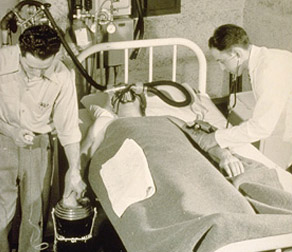
Minnesota Business Study and Professional Men Study: Staff and CVD subjects
Staff and CVD subjects from the Minnesota Business and Professional Men in Stadium tea room, including Ancel and Margaret Keys, Nedra Foster, and three subjects. [click for more]Seven Countries Study
The Seven Countries Study by Ancel Keys and international colleagues began in 1957 and asked the question: Do CVD rates vary among populations in relation to their dietary fat intake and lifestyle differences? The lowest CVD rates were found in Japan and the Greek Islands, the highest in the U.S. and Finland. Essential to low population rates was a habitual diet of less than 10 percent calories from saturated fatty acids, whereas other personal risk factors failed to explain large population differences in rates. Within cultures having different mortality rates, however, the traditional CVD risk factors of serum cholesterol, blood pressure, and cigarette smoking were universally predictive of an individual’s risk.
Next Slide Next Gallery
Japanese Follow-up Surveys of the Seven Countries Study
The Seven Countries Study found that the Japanese and Greeks experienced lowest rates of cardiovascular diseases (CVD). Associated with the low population rates was a diet of less than 10 percent calories from saturated fatty acids, irrespective of total fat [click for more]London Transport Workers
Jeremy Morris of the London School of Hygiene and Tropical Medicine, among the pioneers of CVD epidemiology, asked what had most changed in lifestyle of the late 1940s associated with the burgeoning heart attack epidemic and chose to focus on physical activity habits. Later, in his precursor to the series of Whitehall Studies, he looked at details of individuals’ leisure activity, but first he compared the active occupations of London Transport workers, bus conductors versus drivers, then postmen versus postal clerks. The findings tended to confirm his hypothesis that activity was protective, but he also showed how selection into active occupations, and selection out of them with aging and illness, made conclusions difficult from such occupational comparisons. This led him and others to make detailed measurement of individual physical activity and fitness, which produced more valid data and reoriented study design toward prospective studies and greater heterogeneity of people and populations.
Next Slide Next Gallery
